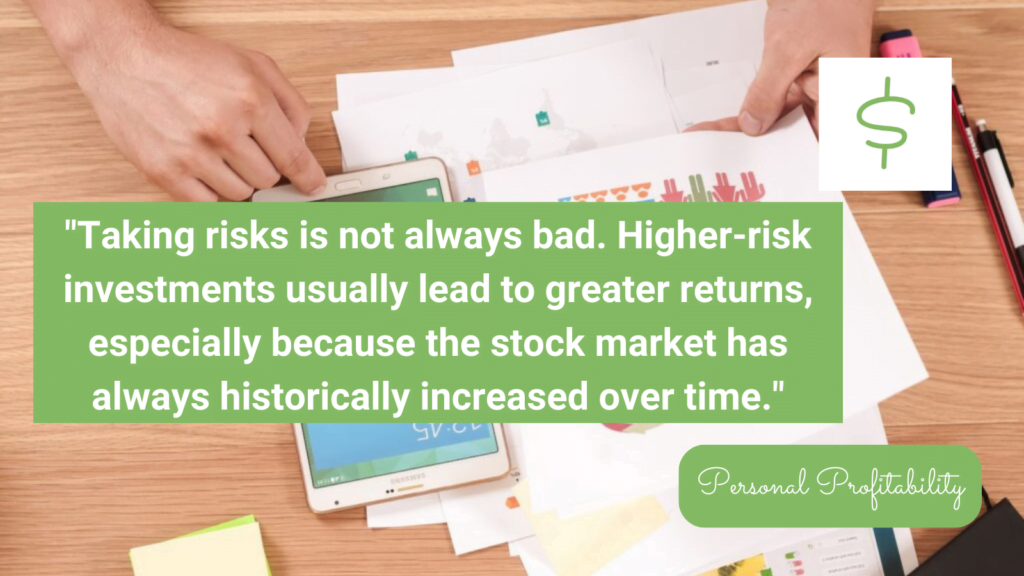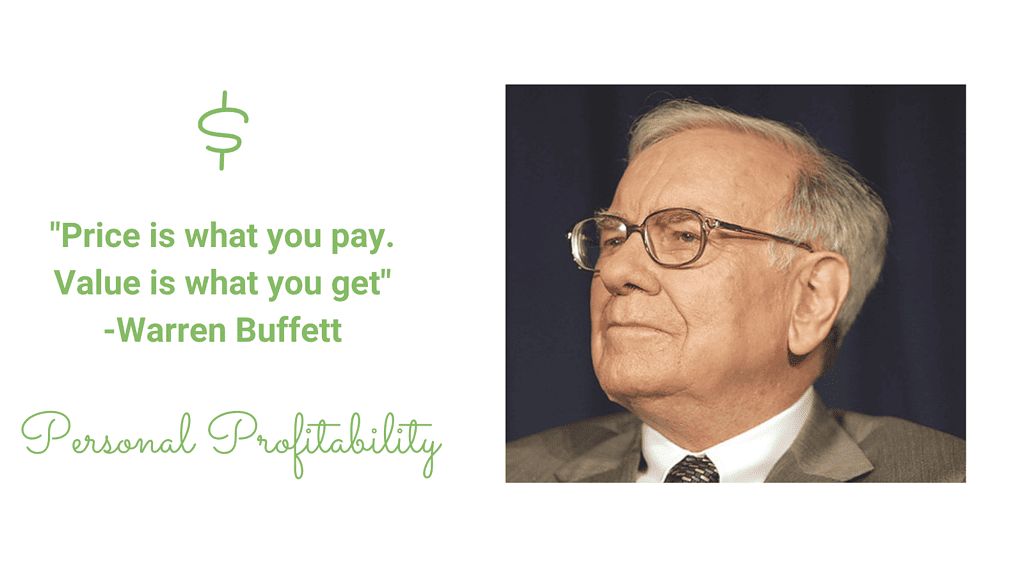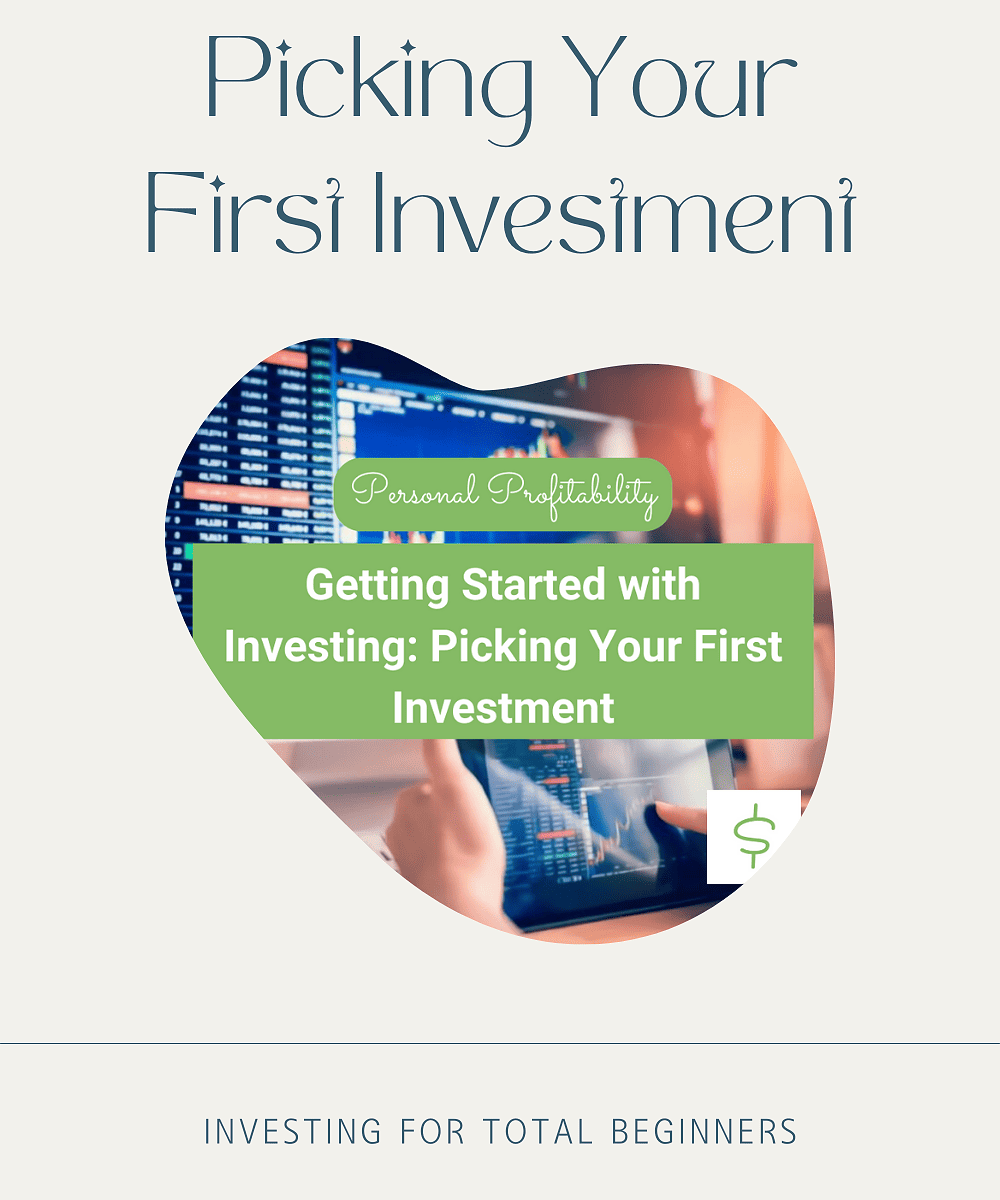
Are you wondering how to choose your first investment? At the start of your own investing journey, consider this advice from Warren Buffet, one of the savviest investors in history. “Be fearful when people are greedy, and be greedy when people are fearful.”
The thinking behind this wise quote is that when many investors buy a stock, it pushes its price up and may make it more expensive than it’s worth. On the other hand, if investors aren’t investing and prices drop, it may present an opportunity for a savvy value investment. As a new investor, you may be overwhelmed by the many different investment products and strategies out there. In this article, we’ll examine some of the basics of choosing your first investment. Investing is an essential part of growing your wealth, so don’t give up yet if you’re feeling lost!
Contents
First Investment: The Investment Accounts Everyone Needs
Retirement Account: Your First Investment Should Be Here
There are generally two types of investment accounts everyone should have. The first is a retirement account. This can be in one of several forms. The standard for employees of large companies is a 401(k). Nonprofit and government employees may have a 403(b) or 457 plan, but they work mostly the same as a 401(k). These accounts are a pre-tax investment, meaning you do not pay taxes on the money that goes into them.
Most companies match your investment up to a certain percentage. For example, your company may agree to match up to 3% of your pay going into your retirement account. If you invest the full 3% every payday, that comes out to 6% of your pay going into savings.
With these accounts, you usually have a handful of investment fund options. For my first 401(k), I chose a target date fund. This fund is managed by a professional fund manager for people planning to retire around the same time. As you get closer to retirement, you want less volatility and risk.
Retirement accounts can also be an IRA or Individual Retirement Account. The traditional IRA is also a pre-tax investment. A Roth IRA is an after-tax investment. In 401k, 403b, and traditional IRA investments, you pay taxes on withdrawals and get to save on taxes the year of your contribution. In a Roth IRA, withdrawals are tax-free, but you must pay taxes the year you earn the income. Picking which of these tax options is better depends on your age and what you expect your income to be post-retirement.
Prefer to listen? Check out my podcast on the stock market for beginners.
Personal Investment Account: After Your First Investment
The other investment account you should have is one you manage yourself. You may have a 401(k), a Roth 401(k) – which is a Roth IRA managed through your 401(k) company – and a personal investment account, all operating alongside each other. This is quite common.
When making investments for your future, set a goal. Know where you’re starting. Are you starting with that 3%? Is your company turning that into 6% with the company match? Sometimes it’s helpful to set a percentage goal of your pay you want to funnel into retirement. To maintain the same standard of living in retirement as your working years, it’s best to save at least 15% of your income across your savings and investment accounts.
Stocks, Bonds, and Funds, Oh My! Picking an Asset Mix
The tricky part of managing your personal investment account is picking your asset mix. Every person will have a different mix based on their needs. The biggest factor in your mix is age.
If you’re in your twenties, you can realistically afford to lose most of your portfolio and be fine for retirement. If you have over thirty years to retirement, you can rebuild if something goes wrong in your investments. If you are sixty and getting ready to retire, losing even 20% of your investments is not as feasible. How do you plan for this? You pick an asset mix.
Traditional mixes include cash, stocks, and fixed-income investments. Cash is money in the bank. This includes CDs, money market funds, and traditional checking and savings accounts. Stocks are any equity investment. This includes regular company stock or a mutual fund composed of stocks. Fixed-income securities are bonds (company, government, or any other investment that pays a fixed rate). Cash is the least risky investment. Fixed-income securities are also fairly low risk. Stocks are volatile and can change value daily.
Young investors can afford to be more heavily weighted in stocks. However, they can also benefit from having cash on hand to pay for things like school. Having fixed-income securities is less important to young people as they can take the risk of owning stocks.
Taking risks is not always bad. Higher-risk investments usually lead to greater returns, especially because the stock market has always historically increased over time. The volatility of your investments is something to watch. Do not think that just because you are young you should not be diversified. Spread the money around sectors and companies.
Take risks appropriate for your age. If you want a free tool to calculate your investment risk, check out Empower.

Stocks
The most well-known investment option is stock. A share of stock represents a fractional ownership in a company. The return on a stock is generated through a dividend or a change in share price. If you buy a share of stock for $1, receive a .05 per share dividend, and later sell for $1.05, you have made .10 per share or 10%. Usually, people do not buy only one share of stock in a company, but you can if you want to or if the price is really high.
Bonds
Bonds are often mysterious and scary to the average person. A bond is an instrument created by a company as a way to raise funds through debt. In other words, if you buy a bond, you loan a company money. Most bonds are for $1,000 and give you a fixed coupon, or interest payment, throughout the bond’s life, most commonly 20 years. Ultimately, you get your $1,000 back and can keep the interest you earned.
State and local governments have bonds called municipal, or muni, bonds. Those are generally tax-free and pay a lower interest rate. The risk with bonds is that a company will go bankrupt, like General Motors or Chrysler did in the late aughts, and will stop paying the coupon and, rarely, keep your $1,000. The company always sets the bond terms before it is sold.
Mutual Funds
A mutual fund is created when a lump of investors put in funds to buy an assortment of stocks. If you buy into a fund, you own a portion of the total assets, depending on how much you buy in for. The price per share of a mutual fund is calculated by dividing total assets (stocks, bonds, cash, and other instruments) by the number of outstanding shares.
Funds are only as good as the people who manage them. They are an easy way to build a diverse portfolio but are not guaranteed to gain. There are also fees (annual marketing and administration fees) associated with mutual funds.
ETFs and Index Funds
Exchange Traded Funds, called ETFs, and Index funds, are another fund option. ETFs and index funds work like mutual funds but are mirrored to major indices such as the NASDAQ composite index or the S&P 500. Because the funds track an existing index, fees are usually very low. These are often a good way to get started investing in funds.
Many other fund options exist but are usually just types of mutual funds. These include bond funds, stock funds, foreign stock funds, emerging markets funds, government treasury funds, and funds that buy other funds.
You can also short sell a stock, where you bet on it going down in price. You can buy options on a stock, where you have the ability to buy it later at a predetermined price. You can trade commodities, such as cattle, corn, or coffee. Some bonds are called mortgage-backed securities. Those let you buy into a share of ownership in the future payments of people’s mortgages. You can invest in almost anything.
Hedge Funds
Hedge funds are like mutual funds, but are not regulated by the government to the same standards. As such, they are only appropriate for wealthy investors with a lot to lose. Though there is a possibility of a big gain, there is also a large opportunity for loss. Most hedge funds require very large investments to join in.
The most important thing to remember is to invest responsibly. If you don’t understand it, don’t buy into it. If you do not know what risks are involved, pick something else.
Certificate of Deposit (CD)
The certificate of deposit, called a CD, is one of the most looked over investment vehicles in the world. Because of their low risk and lack of variability, they are rarely mentioned by financial analysts. They are simply not exciting.
CDs are time deposits, meaning you deposit your money with a financial institution for a fixed term, during which you earn interest. With some economists predicting we’re heading for a recession later this year, maybe it’s time for sensible people like you to look at CDs. CDs will give you a higher rate than a bank savings account. Banks benefit by having your money locked in with them, and you benefit by having a higher rate.
Like savings accounts, CDs are FDIC insured up to $250,000. Local banks usually have pretty good rates too, but shop around before you invest. For zero risk up to $250,000, this is generally a pretty good deal. If you have school or a big purchase looming in the future, a CD is a good option to keep your cash in while waiting for the big day.
I sometimes have 3-month, 6-month, and 1-year CDs as temporary storage for my latent cash to earn extra income. If you are worried about your IRA or 401k, most allow for CDs as an investment option in addition to stocks, bonds, and regular bank accounts.
Warren Buffet’s Strategy
Let’s take a closer look at the investing strategy we mentioned at the beginning of this article.
The big principle is to find a company that can be invested in for a lower cost than the company is worth. Value investing generally uses book value for determining company value. This is a conservative valuation method, as it does not consider future earnings.
How can you identify these opportunities today? Look at a company’s financial statements and find net book value and assets and liabilities. If the market capitalization (total value of all shares of stock) is lower than assets less liabilities, you found a bargain according to the value investing method.
While Buffett is the most famous value investor, he did not come up with the idea, he just adapted it to his own investing style. Benjamin Grahm is often credited with creating value investing. He worked with co-professor David Dodd to create this “cautious approach to investing.”
Since the 1970s, Warren Buffett and his partner Charlie Munger have been considered the top value investors in the world. The proof is in stock. Just look at Berkshire Hathaway over the last four decades, value investing works.
Another investing strategy is dollar-cost averaging (DCA), in which you mitigate the risk of timing the market by investing fixed amounts of money at regular intervals in a target security. This accomplishes more than one investing goal as it makes you invest regularly and protects your money from being hurt by adverse market timing.

Investment Risk for Your First Investment
Investment risk is generally measured with beta. If a stock has a beta of one, the risk is equal to that of the overall market. A higher beta means higher risk. If you look up any stock on Google Finance, the beta is given at the top of the page. Amazon, for example, has a beta of 1.26. That means it is a higher-risk stock.
But how does that impact you? If a stock has low risk, it will probably not go up or down very much. If a stock has a high risk, it could take a big swing either way. You should know how risk-averse you are before investing.
I am a little risk-averse but still young enough to afford a swing in my portfolio. My early stocks had a beta of .20, 1.43, .98, and .64. If weighted evenly, I have a portfolio risk of .81. That means my portfolio will be slightly less volatile than the overall stock market.
Remember, risk should be proportionate to return. If you invest in treasury bills, you have virtually no risk and will get a little return.
Large corporate securities for established companies, called blue chips, are the second least risky investments, not including foreign treasury securities. Blue chip stocks, such as those included in the Dow Jones average, generally have low risk. One major measure of corporate risk is the bond rating system. Companies rated AAA, AA, A, or BBB bonds, are investment grade. BB and below are considered junk bonds.
Your First Investment: The Final Word
Hopefully, this article has given you some useful information with which to start thinking about investing. You’ll want to set up a retirement investment account (with company matching, if available through your employer) and a personal investment account. Assess your own risk tolerance and do more research into the investment products I’ve briefly gone over above.
Investing is essential to your financial future, so get started sooner rather than later. If you’re already investing and need to understand your portfolio better, be sure to check out Empower.

